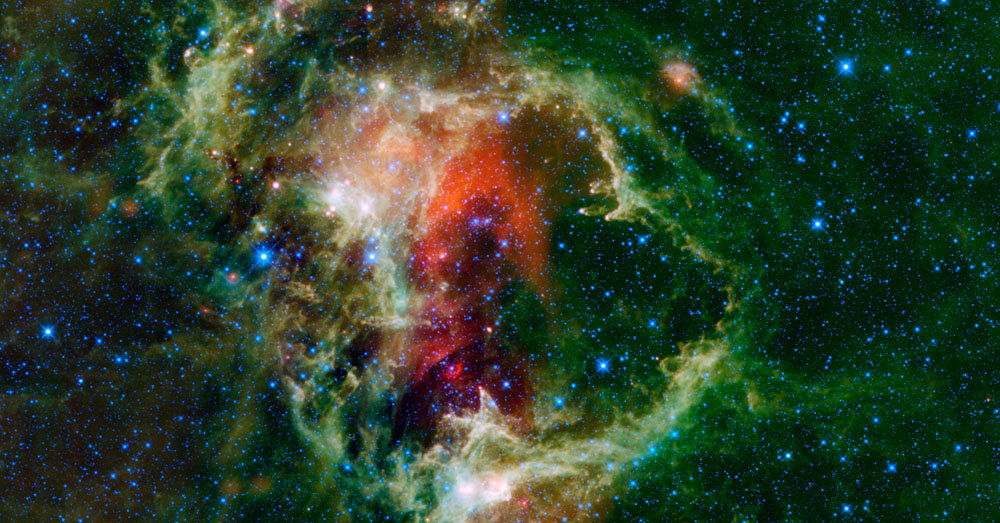
At 150 light-years across, the Soul Nebula is vast cloud of dust and gas that surrounds a cluster of stars about 6,500 light-years from Earth in constellation Cassiopeia. NASA's Wide-field Infrared Survey Explorer (WISE), an infrared space telescope, took the new Soul Nebula photo earlier this year and it was released in April.
The image was part of a larger picture of the Heart and Soul Nebulas taken by WISE and featured today at presentation on the mission at the 216th meeting of the American Astronomical Society in Miami.
The nebula appears to be going through a form of cosmic erosion as stellar winds from its stars blow away interior gas and dust to carve out a cavity. The process has sculpted huge pillars of material directed inwards. [More WISE telescope photos.]
The pillars are regions of the nebula that are dense enough to resist the destructive effects of wind and ultraviolet radiation blowing from the center, where young stars are forming.
Each tower is about 10 light-years tall and has stars forming at its tip. The stellar winds are also compressing material around the interior edge of the nebula, which is setting off a new round of star formation.
Scientists estimate that the stars in the Soul Nebula, also known as the Embryo Nebula or W5, formed about 1 million years ago.
WISE used all four of its infrared detectors to create the Soul Nebula photo, pooling the blue and cyan wavelengths, which are primarily light from stars, with green and red wavelengths that are primarily emissions from warm dust.
The $320 million space observatory launched in December to completely map the sky in unprecedented detail, as well as seek out unseen objects like dark asteroids and bright stars and galaxies that are hidden by obscuring clouds of dust.
The WISE observatory also beamed home striking photo of an asteroid passing in front of a much more distant nebula. That photo also included some satellites, appearing as faint lines, thrown in for good measure.



Reader Comments
to our Newsletter